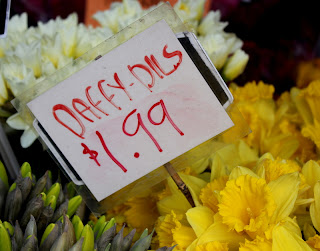
Happiness comes in many different flavors—and you can find 99
of them in the 2012 book A Private History of Happiness. Author George Myerson has assembled a collection of
snippets from diaries, letters, memoirs and other “life records” that show
“everyday moments of joy in different times and cultures” as recorded by
artists, authors, poets, philosophers and other thinkers. Many of these moments
take place while the individuals go about their normal lives—the joy is there
for the recognizing.
After each passage, Myerson relates some background
information on the person who wrote it, and the situation which called up the
moment of happiness. The passages are organized by themes: Morning, Friendship,
Garden, Family, Leisure, Nature, Food and Drink, Well-Being, Creativity, Love
and Evening. Some of the writers are well-known, (Benjamin Franklin, George
Eliot, Ptolemy and Leo Tolstoy, for example), but many are not.
I met many interesting people on these pages, like law
student George Cutler (“A Breakfast Served with Stories and Laughter”) whose
jubilance shines through his words:
“For the moon was bright, the snow full of reflection, I full of breakfast, and Nate [his horse] full of fire; while the cocks of the country crowed about us for music and the stars shot this way and that about the heavens, as if making a display of fireworks for our amusement. All was silent. As we rose [rode up] the hills and looked back upon the far distance which ran down the valley to the southeast, the two extremes of the splendour of the united powers of snow and moonbeams and the contrasted darkness of the deep ravines into which light would not penetrate, filled the whole view. I often stopped to admire the cold but burnished beauties of the prospect and felt the magnificence of the scene.
“I found George up, though I little expected it when I turned a corner to take a look at his window. I had little thought of seeing a light there at that time of the night—I ran upstairs, opened the door an inch and inquired if Mr. Gibbs lived there. Then we laughed ourselves to death and disturbed the neighbors….
“Breakfasted there and told stories till I thought I had told too many […]….”
And pioneer woman Lodisa Frizzell (“Home-Style Cooking on
the Wagon Trail”), writing about the comfort of food on the way west in 1852:
“We encamped in a beautiful place, on the bank of a stream called Elm Creek, under the shade of two large elm trees; here was good grass, plenty of the best of wood, and some water, for the creek was very low, and as the sun was 3 hours high or more, some went out hunting while the old doctor, Beth [Bethel], and I went to cooking; we soon had the best of a fire, cooked some meat and beans, stewed some apples and peaches, boiled some rice, and baked biscuit, and fried some crulls, and as I had a glass pickle jar full of sour milk, and plenty of salaratus [baking soda], I had as fine cakes as if I had been at home; and when they returned in the evening we had a general feast.”
A Private History of
Happiness is a wonderful book to dip in and out of. These stories serve to
remind that it’s often the little, sometimes unnoticed moments that bring the
most happiness. We don’t have to search for happiness, or wait for it to come
to us someday when we’ve reached a certain goal or milestone. When we stop and
look around, we find that happiness has been here all along.
I experienced a moment similar to these a few weeks ago, which I wrote about here. What small moments of happiness have you experienced?




















